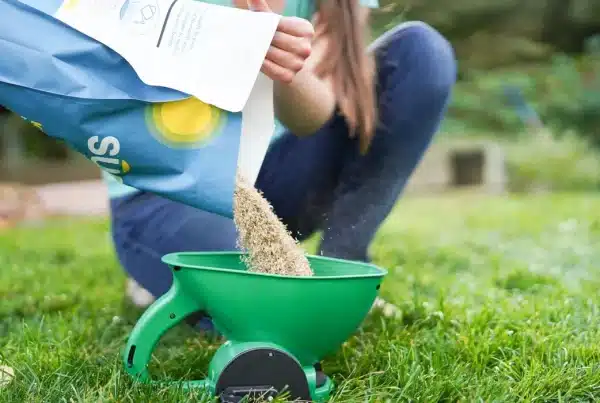Spring is finally here! The birds are chirping, the flowers are blooming, and the lawn is starting to turn green. This is the time of year when many homeowners start thinking about their lawn care routine. If you’re like most people, you probably want your lawn to look its best this summer. In this blog post, we will discuss 10 great tips from Heroes Lawn Care for keeping your lawn healthy and looking great in the springtime.
Tip #1. Water your lawn regularly, but do not overwater.
One of the most important things you can do for your lawn in the springtime is to water it regularly. However, it is also important not to overwater your lawn. If you overwater your lawn, you can actually damage the grass and encourage the growth of weeds. Water your lawn early in the morning or late in the evening so that the sun does not evaporate the water before it has a chance to soak into the ground.
Tip #2. Mow your lawn at the right timing
Start mowing your lawn when it reaches a height of about two and a half inches. Mowing too short can damage your grass while mowing too high will result in an uneven appearance. Be sure to use a sharp blade on your lawnmower to avoid damaging the grass.
Here’s how to sharpen your lawnmower’s blade:
1. If you have a gas lawnmower, remove the spark plug before beginning.
2. For a push lawnmower, tip the mower onto its side. For a riding lawnmower, raise the deck to its highest level.
3. Use a file or sharpening stone to sharpen the blade.
Replace the blade if it is severely damaged.
Tip #3. Fertilize your lawn
Fertilizing your lawn in the springtime will help it to green up and look healthier. Be sure to use a fertilizer that is specifically designed for use in the spring. Apply the fertilizer according to the manufacturer’s instructions. You may need to fertilize your lawn more than once in the springtime in order to keep it looking its best.
Tip #4. Aerate your lawn.
Aerating your lawn helps to improve the drainage and allows air and water to reach the roots of the grass. You can aerate your lawn by using a hand-held aerator or a walk-behind aerator. Be sure to follow the manufacturer’s instructions when using an aerator.
Tip #5. Remove Thatch from your lawn
Thatch is a layer of dead grass, leaves, and other organic matter that can build up on your lawn over time. If you have a lot of thatch on your lawn, it can prevent water and nutrients from reaching the roots of the grass. You can remove thatch from your lawn by using a thatching rake or a power thatcher.
Tip #06. Overseed your lawn
Overseeding your lawn in the springtime will help to fill in any bare spots and make your lawn look fuller and healthier. Be sure to use a grass seed that is specifically designed for use in the spring. Apply the seed according to the manufacturer’s instructions. You may need to overseed your lawn more than once in the springtime in order to keep it looking its best.
Tip #07: Control weeds
Weeds can quickly take over a lawn if they are not controlled. Be sure to pull up any weeds that you see growing on your lawn. You can also use a herbicide to control weeds. Be sure to follow the manufacturer’s instructions when using a herbicide.
Tip #08: Protect your lawn from pests
There are many different types of pests that can damage your lawn, such as grubs, moles, and chinch bugs. Be on the lookout for any signs of pests on your lawn. If you see any pests, be sure to remove them right away. You can also use a pesticide to control pests. Be sure to follow the manufacturer’s instructions when using a pesticide.
Tip #09: Repair damaged areas
If you have any areas of your lawn that are damaged, you can either reseed the area or repair it. To reseed a small area, simply remove any dead grass and weeds, then spread some new seeds over the area. To repair a larger area, you may need to use sod or plugs. Be sure to follow the manufacturer’s instructions when using sod or plugs.
Tip #10: Try different types of grass
If you are not happy with the type of grass that you have, you can try planting a different type. Be sure to do some research on the different types of grass before you make a decision. You may need to experiment with a few different types of grass before you find one that you like.
Here are some examples of grass that you can use:
– Kentucky bluegrass
– Tall fescue
– Perennial ryegrass
– Zoysia grass
– Bermuda grass
When you are choosing a type of grass, be sure to consider your climate and the amount of sunlight that your lawn gets. You will also want to choose a type of grass that is resistant to pests and diseases. Once you have chosen a type of grass, be sure to follow the manufacturer’s instructions when planting it.

By following these tips, you will be well on your way to having a healthy and beautiful lawn this spring.








